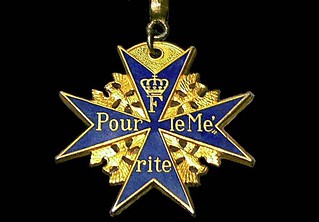
PREV ARTICLE
NEXT ARTICLE
FULL ISSUE
PREV FULL ISSUE
HISTORY OF GERMANY’S BLUE MAX MEDALThis article from The National Interest covers the history of Germany's famous "Blue Max" medal. -Editor
It was Prussia’s highest military award and was in fact given not for individual acts, but rather for repeated and continual gallantry—hence it was often awarded to pilots during World War I. This award should not be confused with its civilian counterpart, which is still awarded to this day. Likewise, while it was a Prussian award but when the King of Prussia became the German Kaiser after the unification of Germany in 1871 it was awarded to all German soldiers. A total of 1,687 were awarded during World War I. A higher-level award, usually given to recipients of high rank, featured golden oakleaves mounted on a suspension ring. This version was issued 122 times. Furthermore, unlike the American Medal of Honor or England’s Victoria Cross, the recipient of the award needed to be among the living and the Pour Le Mérite was not awarded posthumously. Sadly, during World War I many German soldiers died while the paperwork for their awards was being considered. It should also be mentioned that unlike many other medals soldiers in the field wore this one on their uniform. A civil class of the award was created in 1842 by King Frederick William IV of Prussia as the Order Pour le Mérite for Sciences and Arts (Orden Pour le Mérite für Wissenschaften und Künste). It included three sections for the humanities, natural science and the fine arts. Today the Pour Le Mérite is a highly rare medal, and even very few advanced collectors of German medals have one in their collections. Originals range in price from $15,000 to $20,000 today, and while the award was not formally issued after 1918 it was produced in limited numbers following World War I. Three different firms were charged with producing the award from 1914 through 1918 and the same dyes were used in the 1920s explains Stephen Previtera, author of Prussian Blue: A History of the Order Pour le Mérite "These were created for World War I veterans who had not received their award."
To read the complete article, see:

Wayne Homren, Editor The Numismatic Bibliomania Society is a non-profit organization promoting numismatic literature. See our web site at coinbooks.org. To submit items for publication in The E-Sylum, write to the Editor at this address: whomren@gmail.com To subscribe go to: https://my.binhost.com/lists/listinfo/esylum All Rights Reserved. NBS Home Page Contact the NBS webmaster 
|
